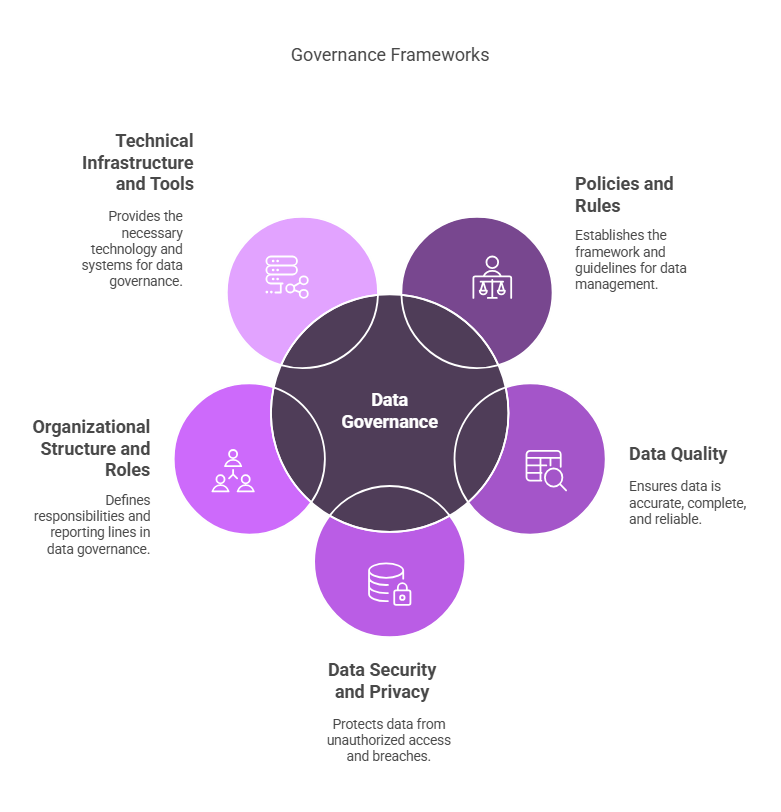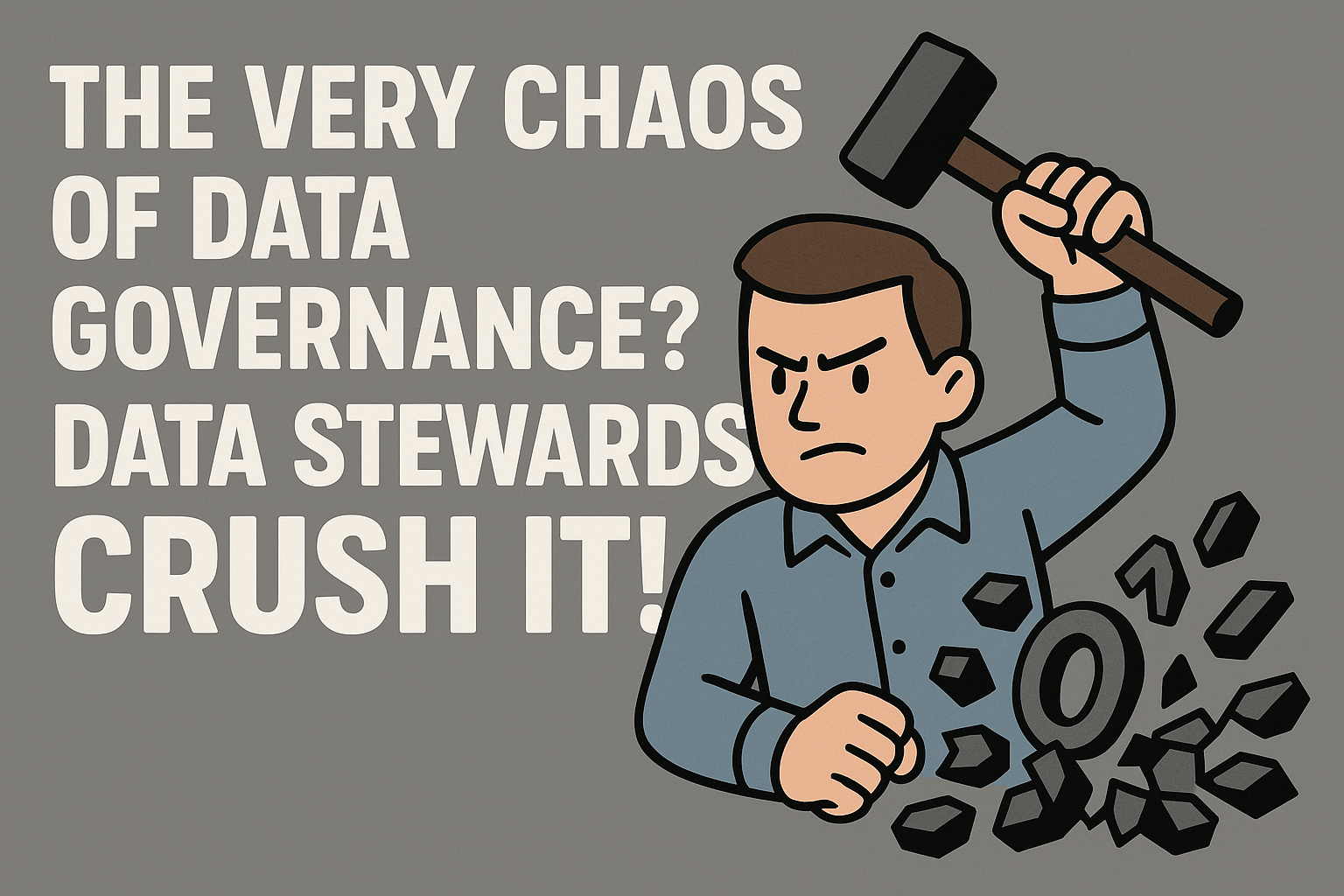
In today’s data-driven world, organizations are swimming in information. But without a solid framework to manage it, that data can quickly become a liability rather than an asset. Enter data governance—the backbone of ensuring data is reliable, secure, and actionable. In this post, we’ll break down the key pillars of data governance and show you how they work together to empower your organization.
Data Governance: The Big Picture
At its core, data governance is about creating a system to manage data as a strategic asset. It’s not just about rules—it’s about aligning people, processes, and technology to ensure data is accurate, accessible, and secure. Think of it as the conductor of an orchestra, ensuring every section plays in harmony. Whether you’re a small startup or a global enterprise, a strong data governance framework sets the stage for better decision-making and compliance.
1. Policies and Rules: Setting the Ground Rules
No system works without clear guidelines. Policies and rules are the foundation of data governance, defining what data is collected, how it’s used, and who can access it. These aren’t just bureaucratic checkboxes—they’re your defense against chaos. For example, a policy might dictate that customer data is only stored for a set period to comply with regulations like GDPR. Rules bring clarity, reduce risk, and keep everyone on the same page.
Further information is on the next blog
2. Data Quality: Trustworthy Data, Trustworthy Decisions
Garbage in, garbage out—it’s an old saying that still rings true. Data quality ensures your data is accurate, complete, and consistent. Imagine making a million-dollar decision based on flawed numbers. Scary, right? A good data governance strategy includes processes to clean, validate, and monitor data. It’s about building trust in your data so your team can act with confidence.
Further information is on this blog
3. Data Security and Privacy: Protecting What Matters
In an era of cyberattacks and privacy laws, safeguarding data is non-negotiable. Data security focuses on protecting data from breaches, while privacy ensures it’s used ethically and legally. Encryption, access controls, and regular audits are just a few tools in the arsenal. A breach doesn’t just cost money—it erodes trust. Strong governance ties security and privacy into every step of the data lifecycle.
Further information is on this blog
4. Organizational Structure and Roles: Who’s in Charge?
Data doesn’t govern itself—it needs people. Defining roles like data stewards, data owners, and governance councils ensures accountability. A data steward might oversee quality checks, while a chief data officer sets the vision. The right structure aligns your team, prevents silos, and keeps data initiatives moving forward. It’s about empowering people to own their part of the process.
Further information is on this blog
5. Technical Infrastructure and Tools: The Engine Room
Finally, you need the right tech to make it all work. From data lakes to governance platforms, your infrastructure supports storage, access, and analysis. Tools like metadata management systems or AI-driven analytics can supercharge your efforts. But here’s the catch: technology alone isn’t enough. It must align with your policies, roles, and goals to deliver real value.
Further information is on this blog
